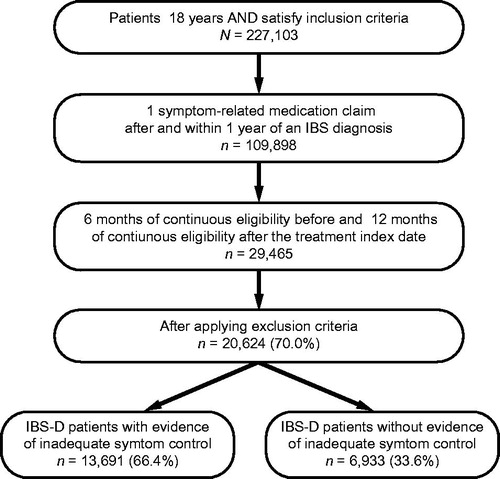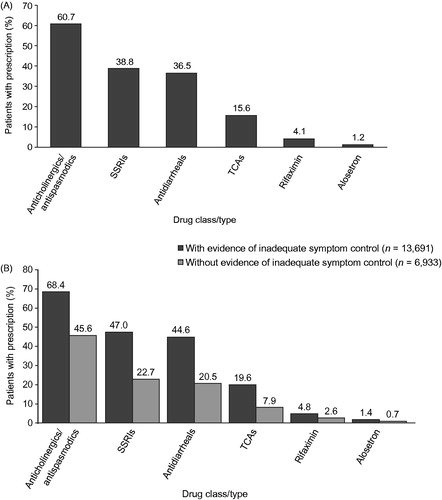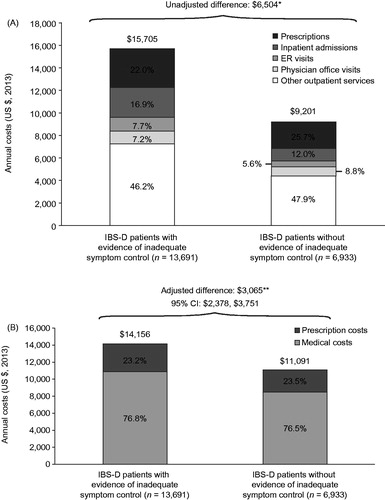Figures & data
Table 1. Demographic and health characteristicsTable Footnotea of IBS-D patients with and without evidence of inadequate symptom control (n = 20,624).
Figure 1. Patient identification flow chart. IBS, irritable bowel syndrome; IBS-D, irritable bowel syndrome with diarrhea.

Table 2. Identification of inadequate symptom control.
Figure 2. Prescription use among IBS-D patients (some patients simultaneously had prescriptions of multiple classes): (A) Overall prescription use for all patients in the study; (B) Prescription use among IBS-D patients with and without evidence of inadequate symptom control (n = 20,624). IBS-D, irritable bowel syndrome with diarrhea; SSRI, selective serotonin reuptake inhibitor; TCA, tricyclic antidepressant.

Figure 3. Treatment-switching patterns among IBS-D patients (n = 20,624). IBS-D, irritable bowel syndrome with diarrhea; SSRI, selective serotonin reuptake inhibitor; TCA, tricyclic antidepressant.

Figure 4. Percentage of patients switching from an index treatment of: (A) anticholinergics/antispasmodics; (B) SSRIs; (C) antidiarrheals; (D) TCAs; (E) rifaximin; and (F) alosetron to a drug in another class. Patients may have switched to multiple drug classes. SSRI, selective serotonin reuptake inhibitor; TCA, tricyclic antidepressant.

Figure 5. Healthcare resource utilization among IBS-D patients with and without evidence of inadequate symptom control: (A) Percentage of patients utilizing healthcare resources based on hospitalizations, ER visits, and outpatient services; (B) Volume of utilization based on physician office visits and prescriptions per year. *p < .01. aOutpatient services include diagnostic imaging or diagnostic ultrasound services. ER, emergency room; IBS-D, irritable bowel syndrome with diarrhea.

Figure 6. Total annual all-cause medical and prescription costs: (A) Unadjusted and (B) adjusted costs among IBS-D patients with and without evidence of inadequate symptom control. *p < .01; **p < .01, difference was adjusted for demographics, ECI score, and general and GI-related comorbidities not included in the ECI score. CI, confidence interval; ECI, Elixhauser comorbidity index; ER, emergency room; GI, gastrointestinal; IBS-D, irritable bowel syndrome with diarrhea.

